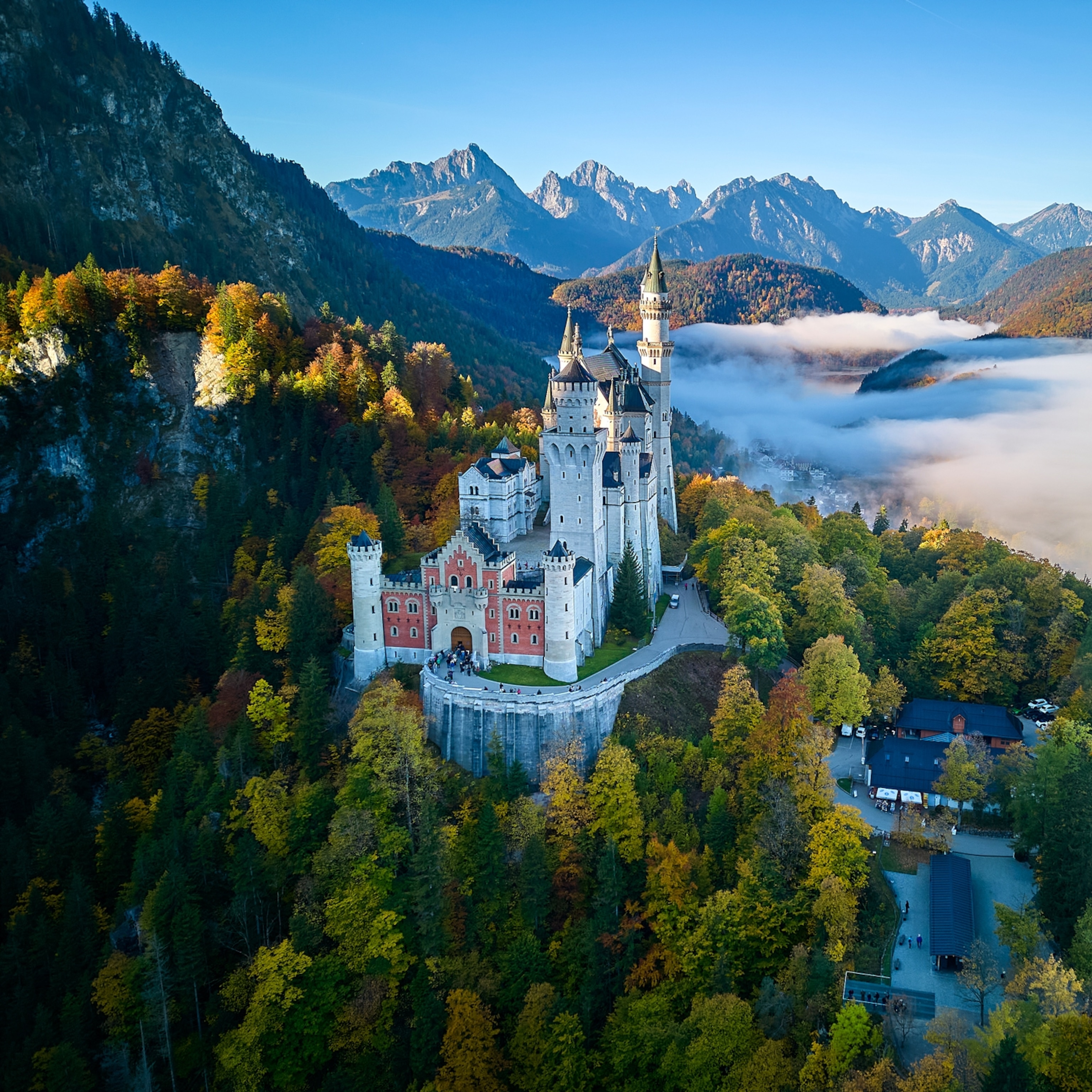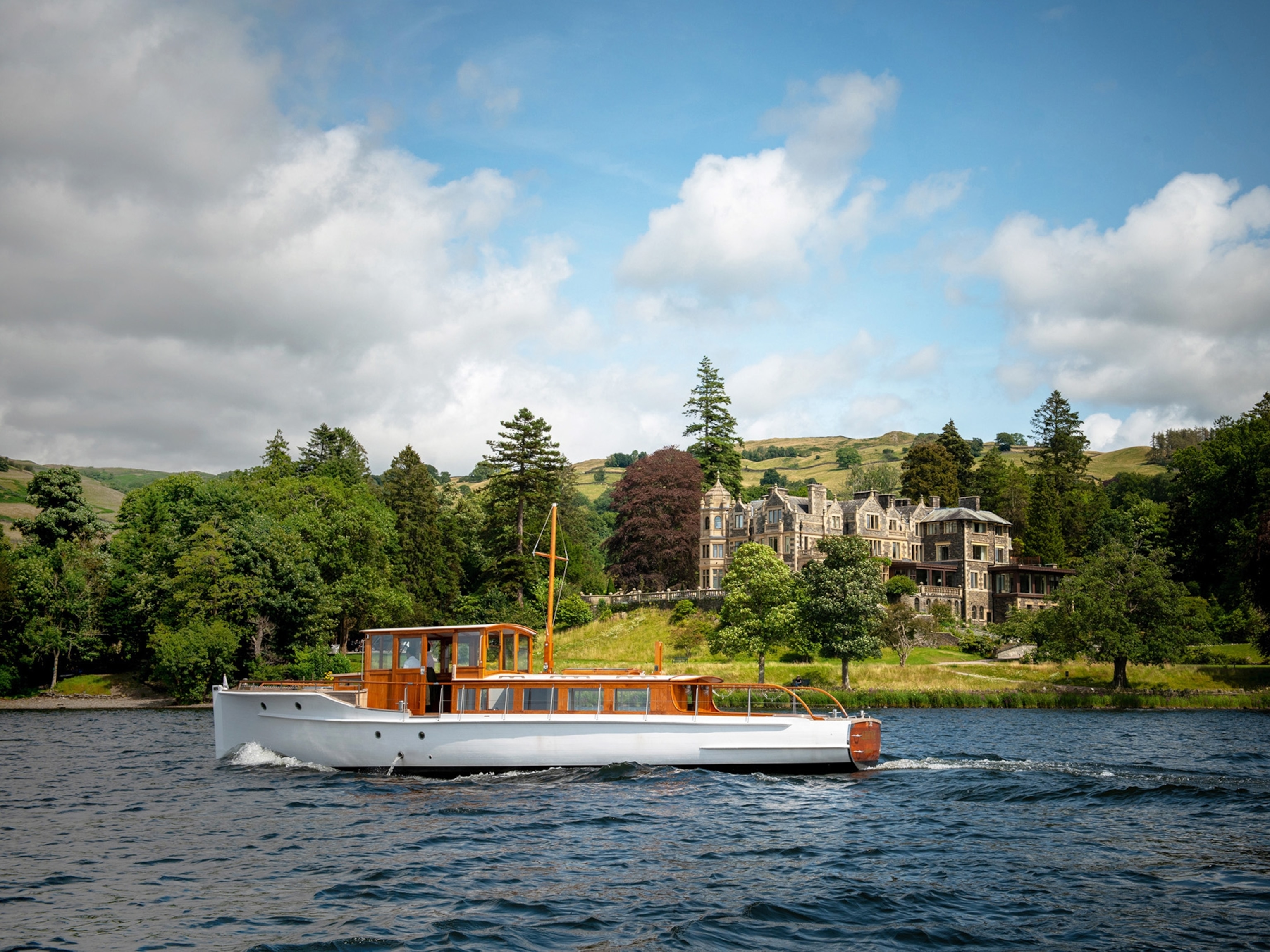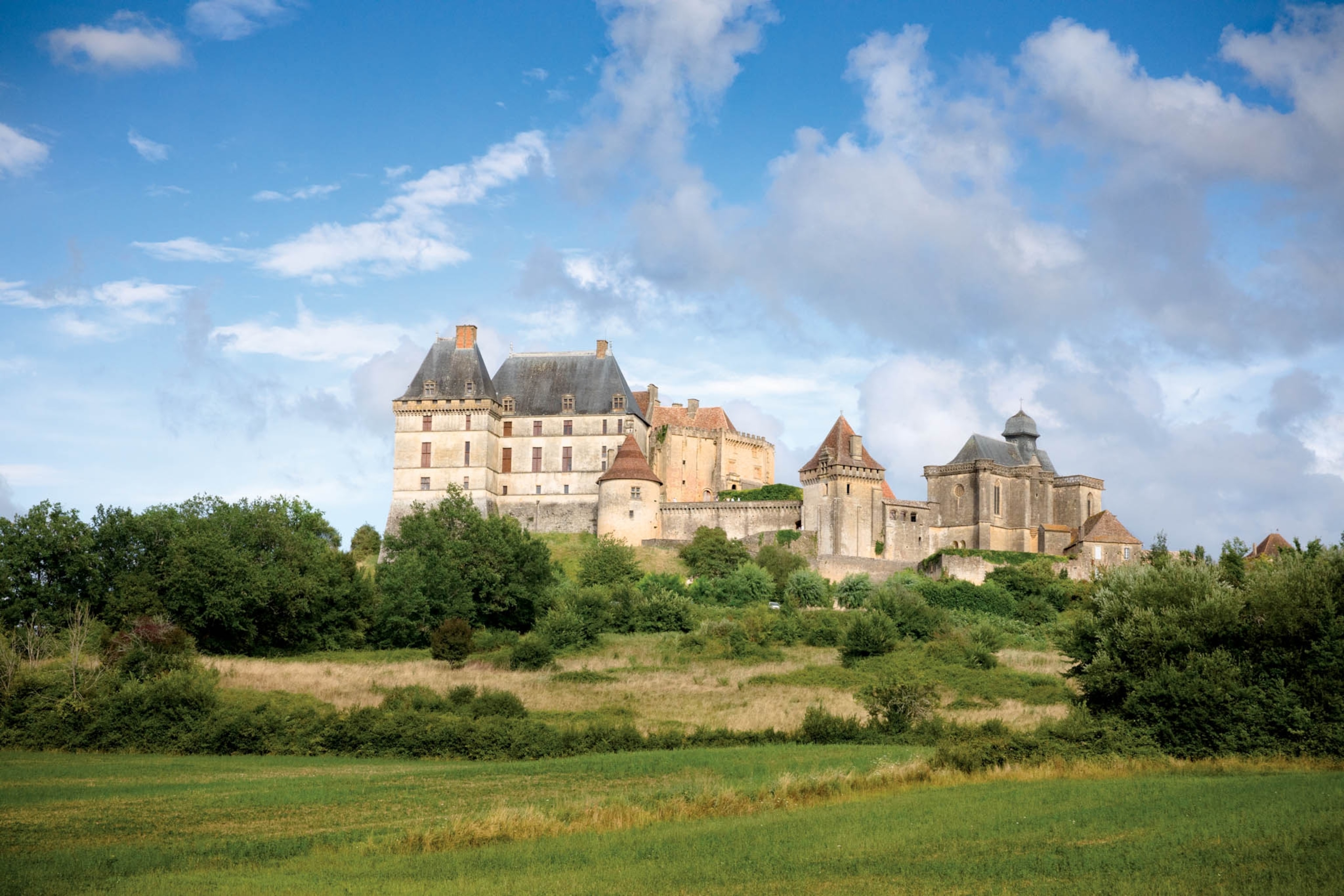
Defining beauty and wonder in southwestern France
The picturesque, historic region is worth a trip.
Love was born in the Dordogne.
Perhaps not really, but there is some literal truth to this. The French word amour comes from the word ameur in Occitan, an ancient Romance language that was once the pervasive patois of the region. Maybe I shouldn’t have been surprised when I fell hard for this region of southwest France. I am hopelessly, crazily in love with everything about it: the prehistoric caves, the fairy-tale castles, and the resilient locals, who still call the region Périgord, its moniker before the country’s historic provinces were renamed during the French Revolution.

Like many affairs, mine began with words.
My go-to guy for Périgord and language questions is Roland Manouvrier, an artisanal ice-cream maker, whom I first met in 2006. He’s corrected my French so many times that I call him mon prof, my teacher.
I find him in his factory on the outskirts of the already outskirty village of St.-Geniès, where he makes his unusual flavors of ice cream with local ingredients (goat cheese, foie gras, chestnut). His latest obsession is crystallized roses, violets, jasmine, and other flowers, which he preserves via a patented process that maintains their organoleptic and aesthetic properties. He includes them in some of his ice cream but mostly ships them to pastry chefs and restaurants around the world. Although it sounds very cosmopolitan, Manouvrier calls himself an old dinosaur of the Périgord (I remind him we are the same age), whose roots run as deep in the fertile soil as those of the oak trees that produce its treasured black truffles. His sons have moved to larger cities for work since I last saw him, but he’s confident that they will return.
“It is necessary to go in order to realize how lucky we are to live in this paradise,” he tells me.
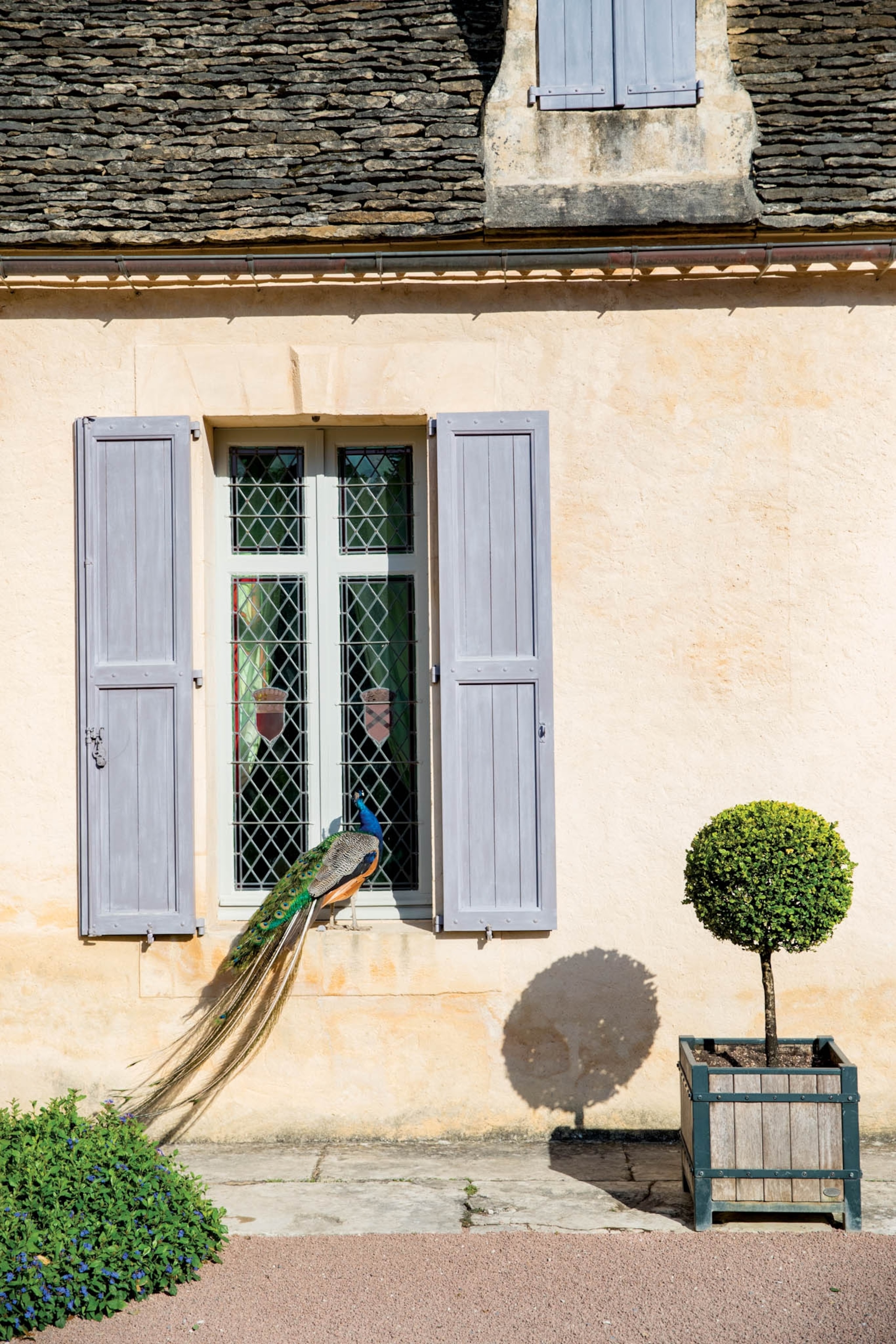
Although I agree with him that the Dordogne is heavenly, you can’t exactly say it’s off the tourist map. Just try to find parking in Sarlat or rent a kayak on the Dordogne River on a summer day. And it’s hardly unsophisticated. There are nine Michelin-starred restaurants, a smattering of upscale hotels and golf courses, and 15 UNESCO World Heritage sites. But considering that France received 87 million visitors in 2017, the relative emptiness is by far the Dordogne’s most luxurious asset.
- National Geographic Expeditions
Manouvrier and I lunch at Archambeau, a restaurant named after the family that has been operating it for four generations, in the walnut-size village of Thonac. Manouvrier knew the grandparents of Guillaume and Benoît, who now run the place. They greet him like a long-lost brother and settle us at an outside table under a leafy tree. The food here reminds Manouvrier of his own grandmother’s cooking.
“What was her specialty?” I ask him.
“Kindness.”
“I mean in the kitchen,” I say.
“Yes, kindness. Products from the garden and traditional recipes thoughtfully prepared and shared with strangers and friends. That’s kindness, non?”

Everything I love about the Dordogne—its authenticity, its generosity, and most notably, its adherence to a time gone by—combines in his words.
And words are important in Périgord. In 1854, Nobel laureate Frédéric Mistral helped found the Félibrige, a literary and cultural association, to conserve, defend, and promote Occitan, also known as langue d’oc, along with its medley of dialects, including Provençal. A literary language between the 10th and 15th centuries, it was widely spoken in Occitania, a historic geographic area covering southern France and Monaco, northeastern Spain, and northwestern Italy. Occitan remained the quotidian language of Périgord into the 20th century. Which partly explains the phenomenon known as La Félibrée.
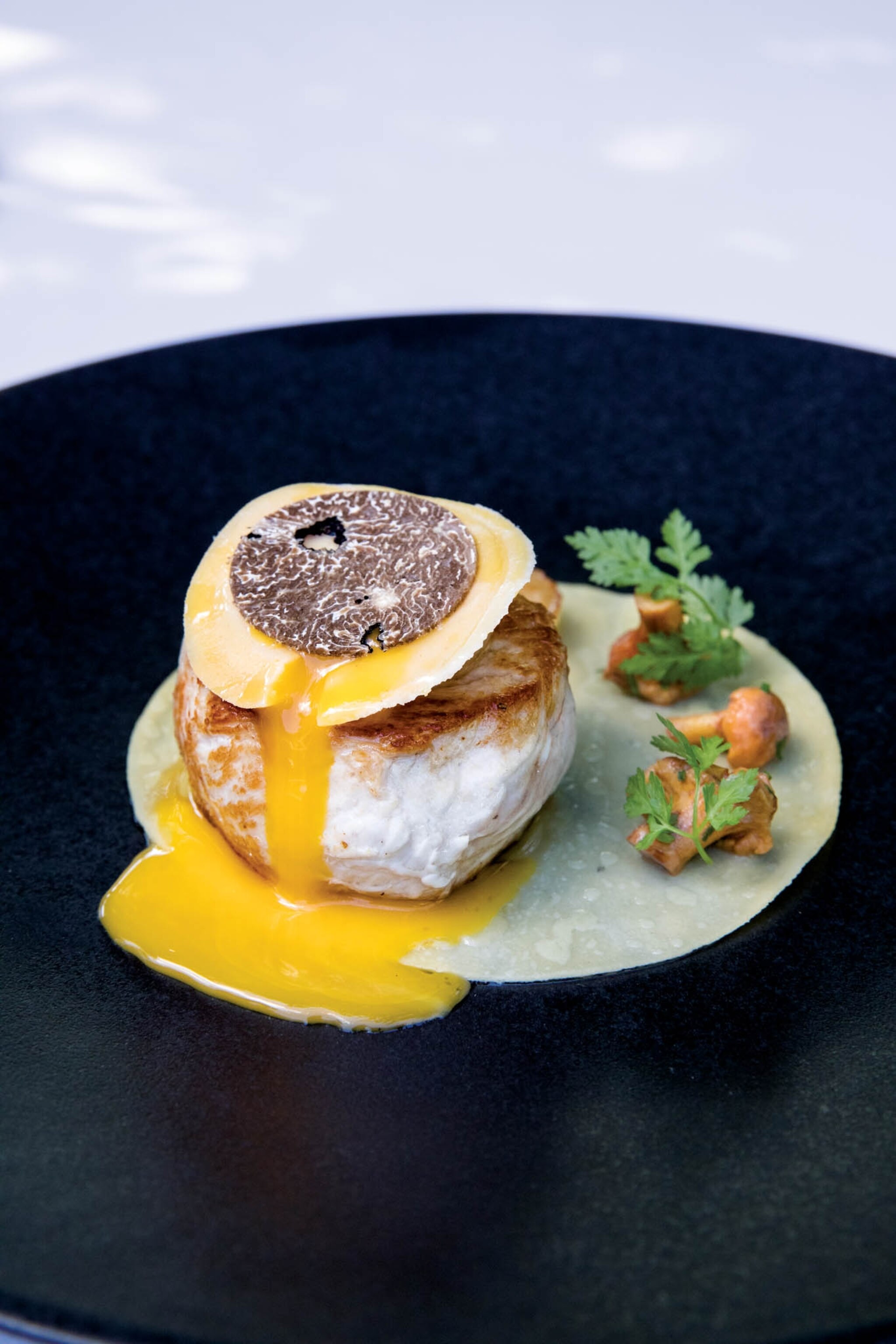
It is festival day. Beneath a sapphire sky and rows of hanging paper-flower garlands, schoolchildren fidget before the cameras of their doting parents. The heat is relentless, and the sun beats on white bonnets and crimson bandanna-like scarves, emblazoned with a yellow heraldic cross and one word: “Périgord.” A group of women in long skirts, lace-collared blouses, and bonnets hook arms and circle, square-dance style, with men dressed head to toe in black, including hats that could be distant cousins of the Stetson. “In Périgord, we are very attached to our country and our differences, but at the same time we are a true land of welcome,” says Jean Bonnefon, a dedicated Occitanist. “La Félibrée is proof of this.”
Over the years, I’d heard about La Félibrée, seen the floral remnants of this annual fete dangling over villages, but never attended. Now Bonnefon, a member of the festival organizing committee in the village of St.-Cyprien, is showing me what I’ve been missing all this time.
“This is a day that celebrates the Occitan roots of our people and is a good way for those who are new to the region to understand our culture,” he says.
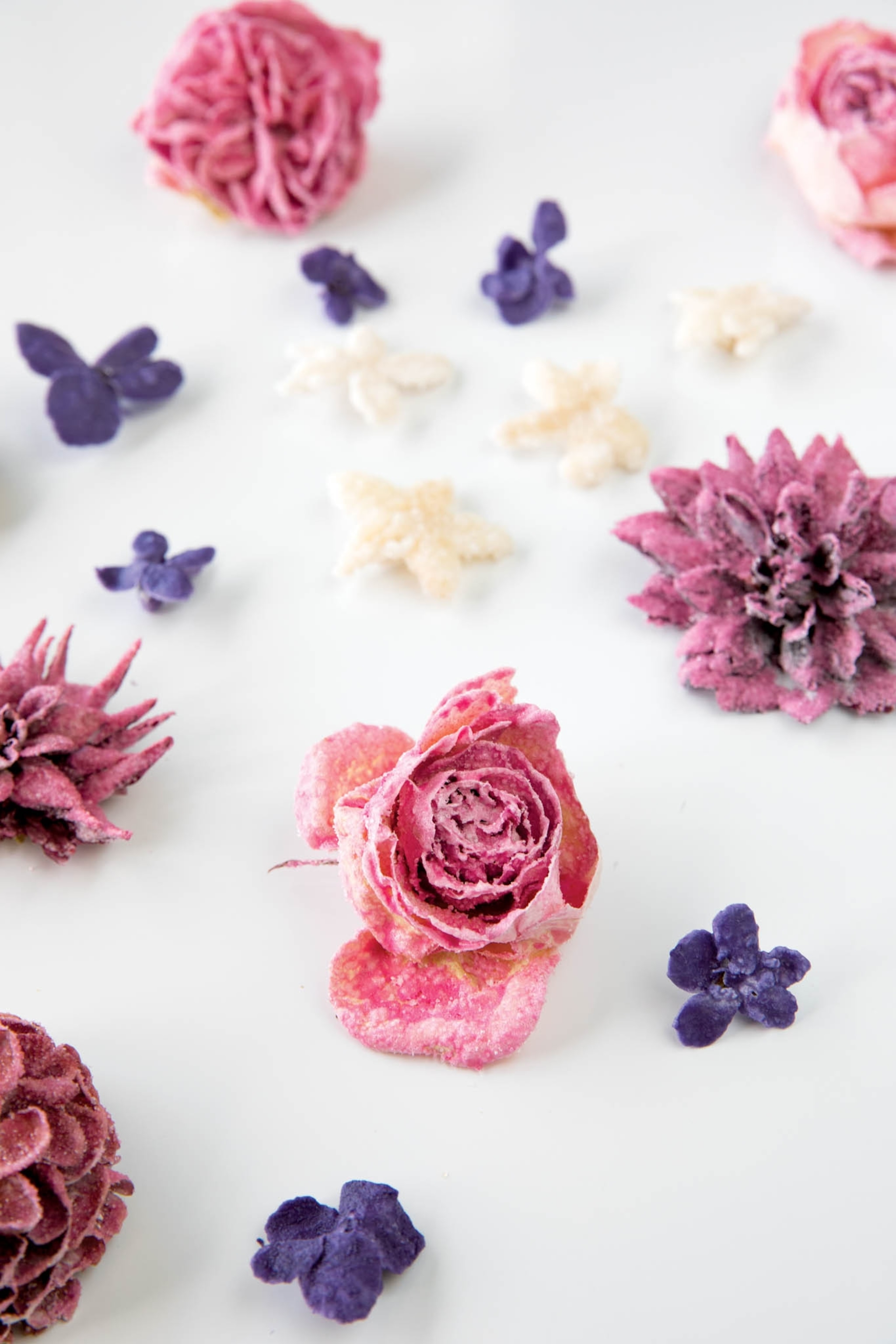
La Félibrée (pronounced Fay-lee-bray) first unfurled in 1903 in the village of Mareuil, and 98 times since, this convivial ode to the Occitan language and heritage has moved its pomp and flourish to a different village of Périgord on the first Sunday in July (it ceased for six years during WWII). Marked by events that include the mayor’s handing over of the keys to the organizing association, a Mass, a parade, and a familial sit-down feast called la taulada, La Félibrée is a collective remembrance and a renaissance of a long backstory. St.-Cyprien, about 80 miles east of Bordeaux, played host in 2018. In 2019 the town of Périgueux will organize the hundredth edition.
Though Bonnefon was born in Bergerac and grew up in Sarlat, his parents were from St.-Cyprien. The former radio and TV host resembles a silver-haired Paul McCartney—kind face, puppy eyes, and lyrical voice—and we can’t walk three feet without someone shaking his hand or kiss-kissing his cheeks, which he doesn’t mind at all. He’s carrying a printout of a speech, written in Occitan, that he must deliver. I joke that he is what we call in English a total rock star.
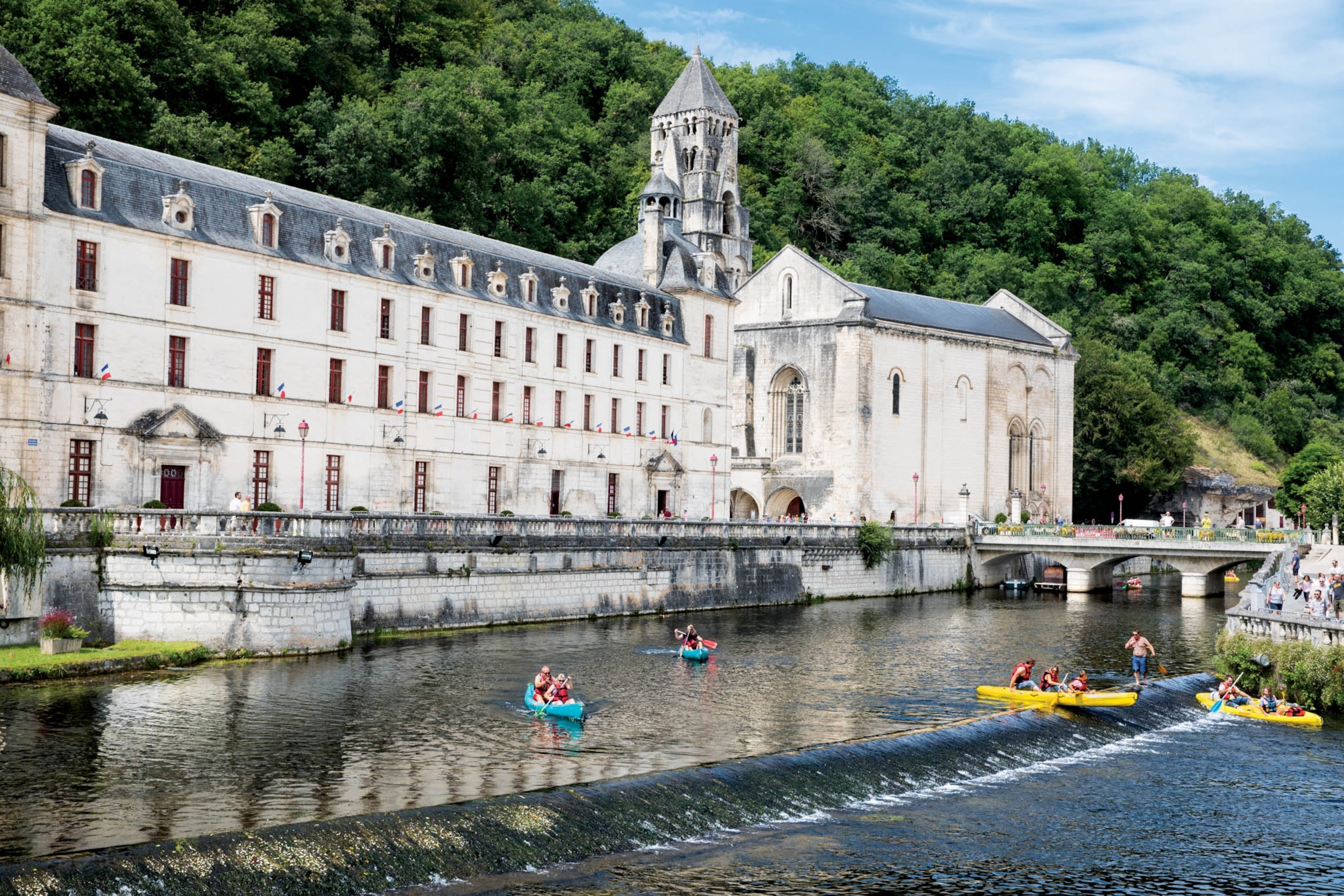
It turns out I’m not far off. Bonnefon has been the front man for an Occitan band called Peiraguda for 40 years, and he writes and sings in the disappearing tongue. Like the troubadours, the medieval storytellers and performers who roamed the continent and entertained the courts of Europe, Bonnefon is a modern-day wandering musician who traverses the region to perpetuate the oral traditions of his ancestors. Bonnefon learned Occitan from his parents and grandparents, who spoke it at home. For a child in the 1950s and ’60s, however, it was punishable to teach or speak it in French schools, pushing Occitan into the linguistic margins. Bonnefon says he realized, at age 24, he was linked to a language and culture that were very rich but in danger of disappearing. He decided to start his band and be active at events like La Félibrée, which is the biggest of its kind in the region. It draws an estimated 20,000 people, though there never seems to be an oppressive crowd.
Bonnefon’s son, Pascal, is also a musician and balladeer, and is in the main square about to serenade the queen of La Félibrée. Like groupies, we get a spot up front, stage left, and we watch the girl of no more than 20 years old, clad in ankle-nipping skirt and bonnet, twist a parasol and sway in time to Pascal’s crooning. I can make out only a word or two of his Occitan lyrics, a salad of syllables and sounds resembling French, Spanish, Italian, and Catalan.
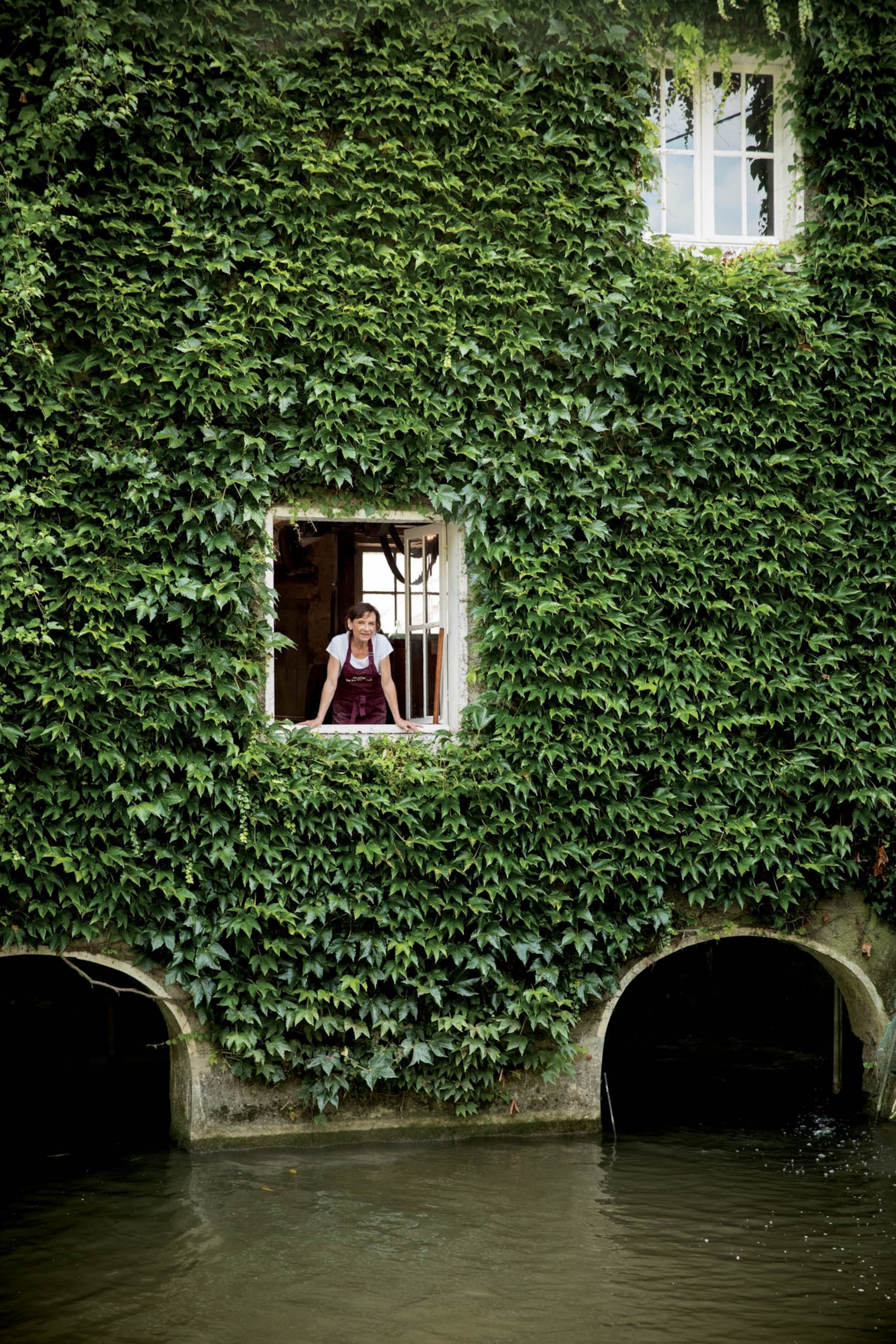
“He sings it beautifully but does not speak it much,” says Bonnefon. “He speaks less well than me. I speak less well than my father, who spoke less well than his father. My grandchildren know the existence of this language, but none speak it regularly. I fear that they will never learn.”
Throughout the day I hear bonjorn for hello; benvenguda for welcome; and encantat for nice to meet you. In addition to amour, I learn that other commonly used French words can thank Occitan for their existence: bouillabaisse from bolhir (to boil) and abaissar (to simmer); and aioli, from alh (garlic) and òli (oil).
The deeper we go into the village, the thicker the flower garlands and the accents. The schoolchildren have dispersed with their families to watch lacemakers ply their wooden bobbins and webs of thread. Hundreds of thousands of vibrant plastic and paper flowers, more than 35 miles in total, flap overhead, strung between honey-hued stone buildings, dangling from geranium--stuffed flower boxes, and winding around ornate lampposts. These floral festoons are the festival’s visual hallmark.
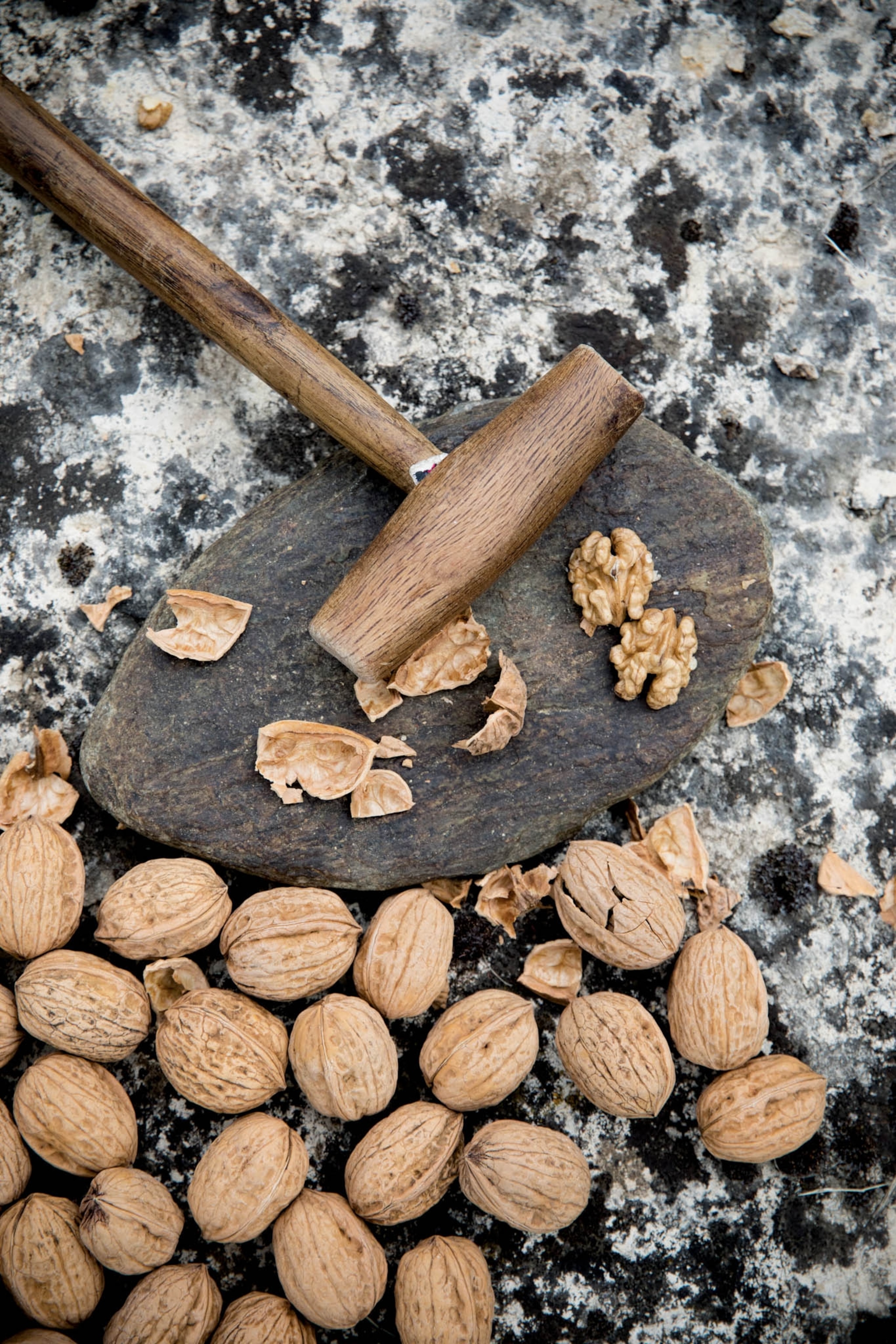
Bonnefon and I sit for coffee, and I ask him if the word “félibrée” means anything or if it’s simply the name of the celebration. To my surprise, he doesn’t have a clear answer. He mentions the poet Mistral and the Félibrige as the possible origin.
I suggest to Bonnefon a definition given to me the day before by my friend Manouvrier, when I had told him I planned to go to the fete. Manouvrier had said that the event was unmissable, and that he believed in the importance of such occasions to respect a time that no longer exists. He’d told me “Félibrée” comes from fée (fairy) and libérée (liberated), and the definition sounded completely plausible to me. But Bonnefon, very kindly, laughs in my face. I’m a little disappointed. The ethereal image of dainty liberated pixies flitting over the festival flowers, and carrying the poems and songs of love and loss on their wings, fits in so well with Périgord’s castle-strewn landscape.
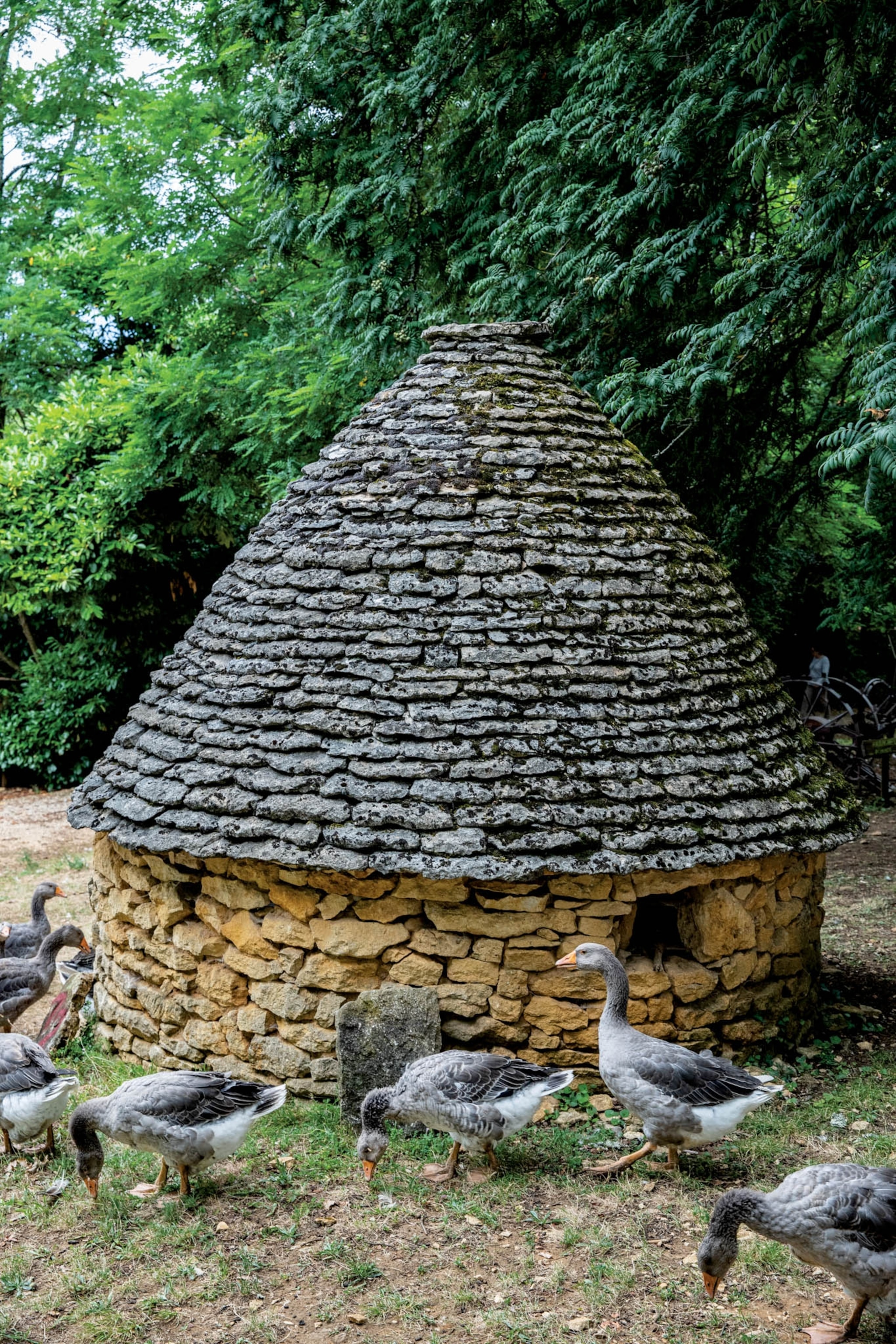
Then Bonnefon and I follow a parade of costumed musicians under a tunnel of wisteria-like flowers. They pound drums, collapse accordions, and squeeze cabrettes, a common bagpipe-like instrument. Slowly we make our way toward La Félibrée’s pièce de résistance, the midday taulada served in St.-Cyprien’s former tobacco-drying house. Hundreds of people wedge along communal tables, surrounded by frescoed walls. At least a hundred more overflow outside under a tent. Bonnefon says 700 tickets were sold, but he guesses that about 750 showed up. More tables are hauled in, and from what I can see, no one is turned away. We slip into seats next to a brother and sister in their 30s from Bordeaux who’ve come at the bidding of their grandmother, who lives a few villages away and is sitting at another table with neighbors. Like me, they’re at their first taulada.
Bonnefon disappears and returns with the essentials: bowls, glasses, and a bottle of red Bergerac wine, which is soon replaced by another, and another. Eventually we’re served the Périgord menu mainstays of confit de canard (duck leg) and enchaud (a regional pork specialty), goat cheese with walnuts, and, despite the sweltering temperatures, a bowl of white garlic soup called tourin blanchi. When the bowl is empty, Bonnefon splashes in some wine and teaches me the Périgourdine art of faire chabrol, in which I’m instructed to pick up my bowl and slurp the remaining liquid. Bonnefon smiles. “Now you are one of us,” he says, lifting his own bowl to his face.
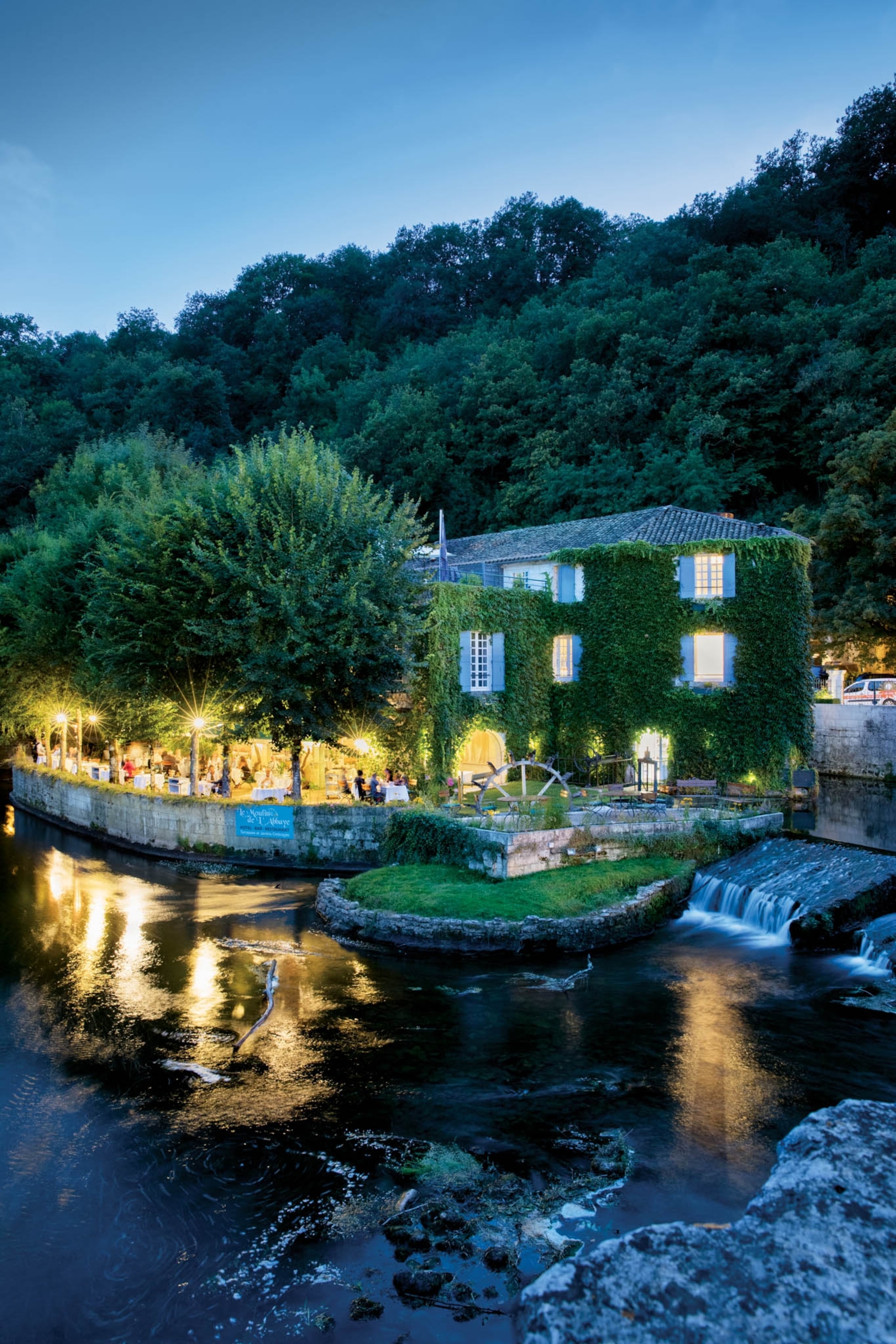
Beyond the writer Mistral’s intentions, I understand the need for La Félibrée more than ever. In an increasingly small world where more travelers spin the globe in search of what’s genuine and where residents of such places grow increasingly resentful as they watch their homes slowly succumb to souvenir shops and selfie sticks, Périgord is decidedly and willfully not that place.
On the contrary, I am invited to a large Périgourdine party decorated with colorful streamers, and asked to sit at the family table where the fun uncle lets me drink wine from a bowl. I’ve never felt more at home—or more love for the Dordogne.
For days after I leave, I’m still thinking of the word “félibrée,” and I finally find a definition that satisfies. Félibré (one e) means a pupil and a follower, a new troubadour, a writer in the Oc language, and a member of the Félibrige.
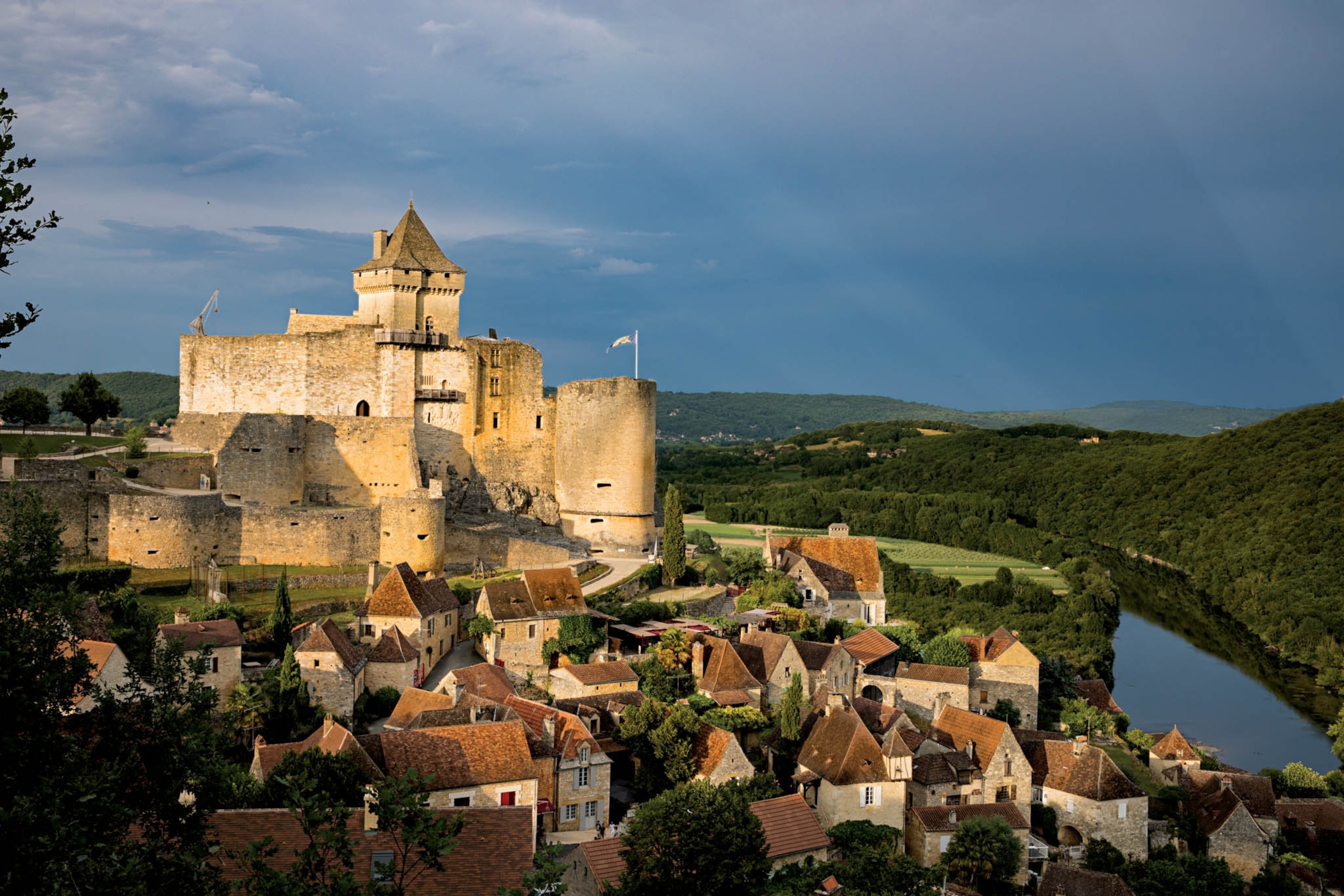
For one day in July, I became all of these. In my heart. In my mind. And in my words.

